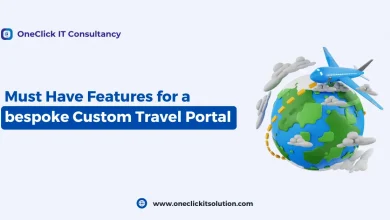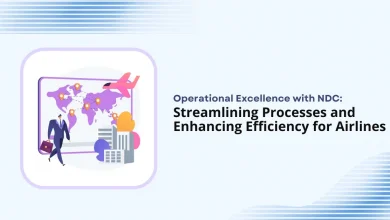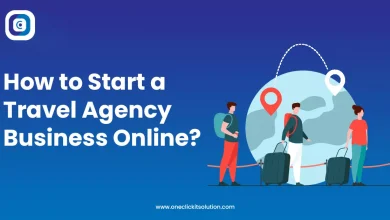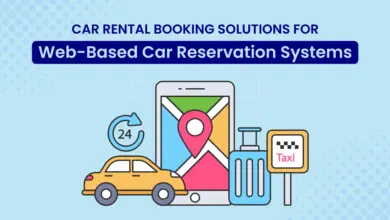Amadeus vs Sabre: Shaping Your GDS Choice for Travel Excellence
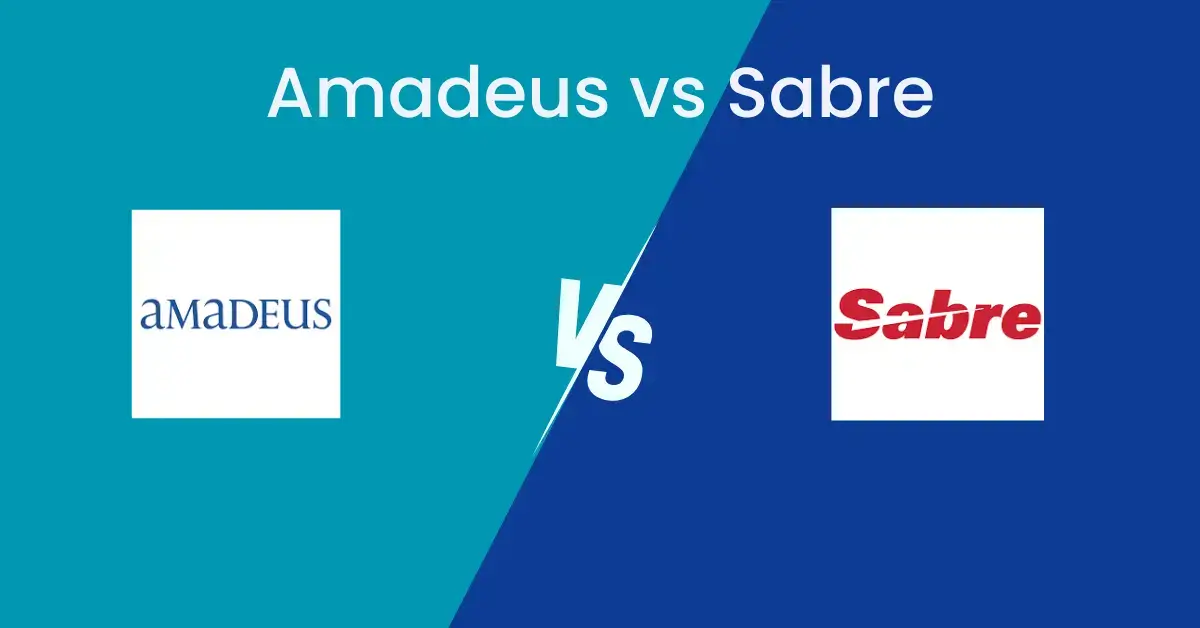
Have you ever contemplated the transformative potential of a GDS Amadeus or Sabre GDS software for your travel offerings? If you’re searching for the perfect airline reservation system but find yourself caught in the Amadeus vs Sabre debate, this guide is here to help.
Both Amadeus GDS and Sabre GDS software offer powerful solutions for travel agencies, airlines, and hospitality providers. But which one is the right fit for your business? Does Amadeus GDS software provide a competitive advantage, or are Sabre competitors offering better opportunities? Let’s analyze their strengths, features, and Amadeus alternatives to help you make an informed decision.
We are here to systematically analyze the strengths and weaknesses, closely scrutinize the features, and unveil the intricate functionalities of each GDS. Are you prepared to make an informed decision that could significantly influence the course of your travel enterprise? Let the exploration between Amadeus vs Sabre begin!
What is GDS (Global Distribution System) ?
A Global Distribution System (GDS) serves as an intermediary bridging the gap between entities seeking travel arrangements and a diverse array of service providers, including hotels, accommodations, and related services. Its primary function revolves around the efficient transmission of intricate product specifics, comprehensive pricing data, and real-time availability information to travel agents and online booking engines, thereby streamlining and automating the complex web of transactions within the travel industry.
The GDS presents a unified interface that harmoniously integrates critical data pertaining to hotels, flights, and car rentals, elevating the level of user convenience to greater heights. For hotels grappling with the challenges of attracting the attention of travelers or encountering hurdles in courting their desired target demographic, embracing a GDS can be a strategic maneuver. Popular examples of GDS include: Amadeus, Sabre, and TravelPort.
Notwithstanding the proliferation of third-party online travel agencies (OTAs) such as the likes of Booking.com and expedia travel, the global distribution system travel system steadfastly retains its prominence as the foremost mechanism for the global promotion of hotels to the corporate travel sector, concurrently serving as an instrument to entice discerning travelers into reserving accommodations at these establishments.
What is Amadeus GDS?
A Global Distribution System (GDS) is an intermediary that connects travel service providers such as airlines, hotels, and car rentals with travel agencies and booking platforms. What is Amadeus GDS? It is one of the leading GDS platforms, facilitating seamless transactions by providing real-time data on flights, accommodations, and other travel services.
Despite the rise of third-party OTAs like Booking.com and Expedia, Amadeus GDS software remains a crucial tool for travel agencies, especially in the corporate sector.
Who Owns Amadeus GDS?
If you’re wondering, who owns Amadeus GDS?, it is a Spain-based company founded by Air France, Lufthansa, Iberia, and SAS. Over the years, it has expanded its operations to over 190 countries, making it one of the most comprehensive GDS platforms globally.

Amadeus GDS Software: Inventory and Coverage
Amadeus API, founded in 1987 in Madrid by four prominent European airlines Air France, Lufthansa, Iberia, and SAS initially concentrated its efforts within the EMEA region (comprising Europe, the Middle East, and Africa). However, its trajectory has evolved over the years, transforming it into a global juggernaut that presently operates across 190 markets, with a presence established in over one hundred offices worldwide.
Amadeus Airline Coverage
Amadeus commands a substantial portion of the world’s scheduled flights, with an impressive network of partnerships that spans over 400 airlines, including 130+ hybrid and low-cost carriers (LCCs). Notably, Ryanair, Europe’s foremost LCC, is among its notable collaborators. The platform facilitates connectivity to more than a hundred airlines through interline agreements. Travel agencies that embrace Amadeus airline as their chosen GDS gain seamless access to ancillary services and fare families from a pool of over 150 and 100 suppliers, respectively. Furthermore, sellers enjoy the privilege of real-time access to exclusive offers extended by 120 airlines utilizing the advanced passenger service system (PSS) known as Altéa Reservation, a system that operates under the Amadeus airline umbrella.
Hotel Accommodations
Amadeus boasts an extensive inventory comprising over a million distinct properties, sourced from prominent bed banks and 350 hotel chains. The platform extends access to a diverse array of alternative accommodations, fostering partnerships with short-term rental aggregators like Booking.com and TrustedStays. It is noteworthy that two of the world’s three largest hotel conglomerates, Marriott International and IHG, have opted for Amadeus’ cloud-based central reservation system, thus enhancing the efficiency of their Amadeus booking processes.
Additional Content
Amadeus Global Distribution System (GDS) goes beyond flights and hotels, delivering an all-inclusive spectrum of travel content. This expansive portfolio encompasses access to 44 car rental brands, operating across approximately 42,000 locations on a global scale. Additionally, it includes dealings with 90 railway companies, operating within 170 countries, and provides access to over 300,000 tours and activities. Furthermore, the platform accommodates more than 30 bookable and 100 searchable cruise companies and ferry lines.
To complement these offerings, Amadeus GDS has established partnerships with 21 insurance providers. This extensive array of travel content is accessible via the Amadeus GDS Travel platform, underpinned by a dedicated team of 16,000 professionals, encompassing developers, industry experts, local market specialists, and various other domain experts. Information is seamlessly disseminated through a plethora of channels, including online self-booking tools, travel agency front office solutions, mobile applications, and other related channels.
Sabre GDS Software: Inventory and Coverage
The Sabre Global Distribution System (GDS), originating from a computer reservation initiative by American Airlines, has evolved into a leading GDS with a strong emphasis on the Americas. Headquartered in Texas, Sabre extends its operational reach with additional offices throughout North and South America. Despite its strong regional ties, Sabre has successfully penetrated the EMEA and APAC regions, evidenced by its 30+ and 17 offices in these areas, respectively. Serving a substantial network, Sabre connects over 400,000 travel agencies in more than 160 countries.
Sabre Flight Coverage
With Sabre, travel agents gain access to a vast array of accommodation choices, featuring an inventory exceeding 1.6 million properties. A significant collaboration includes Sabre’s selection as the central reservation system for Hyatt hotels, marking a notable advancement in hotel reservation capabilities.
Diverse Travel Services
Sabre’s offerings extend well beyond flights and hotels. The platform boasts a comprehensive range of travel services, providing access to 38 car rental brands across 160 countries, robust rail networks including major operators from nine countries, and extensive cruise line partnerships. Additionally, Sabre works in collaboration with tour operators from various countries, enhancing its portfolio of travel services and options.
Amadeus vs Sabre: A Direct Comparison
Whether it’s the extensive global reach and market coverage of Amadeus or the detailed flight and hotel services with a strong American footprint that Sabre offers, both platforms Amadeus vs Sabre have their strengths to match your varying business objectives.
1. Global Presence: Amadeus vs Sabre
- Amadeus: Established in Europe and now spanning 190 markets globally.
- Sabre: Rooted in American origins with a strong presence in the Americas, yet with significant reach in EMEA and APAC.
Business Implication: Businesses with a global clientele may find Amadeus GDS widespread presence advantageous, while those targeting American travelers or with strong ties to American travel networks might prefer Sabre’s robust American presence.
2. Flight Coverage: Amadeus vs Sabre
- Amadeus: Encompasses a vast 82% of global scheduled flights and partnerships with over 400 airlines, including low-cost carriers.
- Sabre: Connects to a similar number of airlines with a focus on full-service and low-cost options, and offers ancillaries and branded fares.
Business Implication: Agencies aiming for the broadest flight options might lean towards Amadeus GDS. However, those valuing ancillary sales and branded fares may find Sabre’s offerings more aligned with their business model.
3. Hotel Inventory: Amadeus vs Sabre
- Amadeus: Over one million properties, including major hotel chains and alternative accommodations.
- Sabre: Provides access to a more extensive inventory of over 1.6 million lodging options and a partnership with Hyatt.
Business Implication: Amadeus GDS diverse accommodation options may appeal to businesses looking for variety, including non-traditional stays. Sabre’s larger hotel inventory and Hyatt partnership could be more attractive for those prioritizing extensive hotel bookings, especially with Hyatt’s properties.
4. Additional Content: Amadeus vs Sabre
- Amadeus: Offers a comprehensive range of content, including car rentals, railways, tours, cruises, and insurance.
- Sabre: Also boasts a rich spectrum of content, with car rentals, rail networks, and partnerships with tour operators.
Business Implication: Companies seeking a one-stop-shop for diverse travel needs may be inclined to use Amadeus GDS due to its wide range of services. Conversely, Sabre’s content spectrum, particularly its rail and cruise offerings, may better serve businesses that focus on these specific travel sectors.
NDC support: Amadeus vs Sabre
Both Amadeus GDS and Sabre GDS software support New Distribution Capability (NDC), which enhances airline content and personalization. The New Distribution Capability (NDC) initiative seeks to enhance the shopping experience within the air travel market. Key players such as Lufthansa, American Airlines, and United are withdrawing their offerings from indirect channels powered by the outdated EDIFACT protocol. As a result, GDS airline systems have little choice but to acknowledge this new reality and gradually incorporate NDC functionalities.
Amadeus’ NDC Offerings
Amadeus GDS provides XML SOAP (Simple Object Access Protocol) APIs for accessing NDC content, allowing for a structured and standardized way to exchange data. Amadeus’ NDC integrations cover a wide range of airlines, including Air France-KLM, American Airlines, Avianca Group, Iberia, Qantas, Qatar Airways, Singapore Airlines, United Airlines, and others. Amadeus GDS stands out with its extensive airline availability, with 19 airlines integrated and continuous progress on more integrations. Their NDC offerings include functionalities for order management, including changes and cancellations, payment processing capabilities, and robust shopping features that encompass discounted benefits and promotional offers.
Amadeus GDS employs XML SOAP APIs, which are well-established and widely adopted, ensuring compatibility and a certain level of standardization that travel businesses might already be familiar with. The broader range of airline integrations indicates that Amadeus GDS might offer a more extensive network for travel businesses, enhancing their ability to serve a more diverse customer base. Additionally, Amadeus’s capabilities in order management and comprehensive shopping features, including discounted benefits, may help your business in providing a more competitive and attractive offering to end customers.
Sabre’s NDC Offerings
Sabre offers NDC-enabled APIs that cater to JSON (JavaScript Object Notation) formats. These APIs are designed to handle both airline GDS systems and NDC content. Sabre’s NDC integrations include partnerships with several airlines like Air France-KLM, American Airlines, Qantas, Singapore Airlines, and United Airlines. Additionally, Sabre’s ARM (Airline Retailing Maturity) index lists capabilities such as order management, including cancellations, payment processing, including refunds, and shopping functionalities that support personalized offers and options presented in various languages and currencies.
Sabre’s approach with JSON APIs may appeal to you if you are looking for modern, web-based integration methods that facilitate easy parsing and data interchange. Their NDC integrations with a select group of airlines suggest a more focused approach, potentially providing deeper collaboration with these partners. Sabre’s ARM index indicates a comprehensive suite of order and pay capabilities, including cancellations and refunds, which can be crucial for your travel business to manage bookings efficiently. The shopping capabilities listed emphasize personalized services, which can help travel businesses offer customized travel options to their customers.
Amadeus vs Sabre : NDC Offerings
We explore how both GDS airline systems seamlessly leverage NDC to provide personalized offerings to businesses. With their distinct NDC features and airline integrations, each platform offers unique benefits. Here’s an introductory comparison to help you select the idea GDS between Amadeus vs Sabre that best fits your operational needs and future growth.
1. NDC Capability Range: Amadeus vs Sabre
- Sabre has verified 22 ARM capabilities for sellers and 18 for airlines.
- Amadeus supports 23 ARM capabilities for sellers and 36 for airlines.
Business Implication: If your business is focused on depth and a wide array of airline retailing features, Amadeus GDS may be more appealing. In contrast, Sabre might be suitable for those prioritizing a balanced range of seller and airline capabilities.
2. Airline Partners: Amadeus vs Sabre
- Sabre offers NDC content from Avianca Group, Qatar Airways, Qantas, and others.
- Amadeus GDS provides NDC content from 19 airlines, including large carriers like United Airlines and Air France-KLM.
Business Implication: Sabre might be ideal for travel businesses that frequently book with its specific partner airlines. Amadeus GDS could be the choice for businesses seeking a broader range of airline partnerships. Additionally, Amadeus GDS customer support service would also be beneficial.
3. API Technology: Amadeus vs Sabre
- Sabre uses REST/JSON Offer and Order APIs, which are modern and can be more streamlined for web development.
- Amadeus GDS relies on XML-based SOAP APIs and Selling Platform Connect, which are robust and standardized.
Business Implication: For travel businesses looking for the latest in API technology and ease of integration, Sabre’s JSON APIs might be preferable. Amadeus’ XML SOAP APIs could be more suitable for businesses that value stability and established standards.
4. Integration and Subscription Model: Amadeus vs Sabre
- Sabre’s capabilities might appeal to travel businesses that require a focused and efficient set of tools for specific airlines.
- Amadeus GDS, with its Enterprise subscription model, may be better suited for large travel players that require extensive and diverse airline content.
Business Implication: If you’re a large-scale travel operator or agency, Amadeus’ expansive model might offer the comprehensive solutions you need. For mid-sized or specialized agencies, Sabre’s targeted offerings could be more beneficial.
5. Content Accessibility: Amadeus vs Sabre
- Sabre provides shopping, booking, fulfillment, and servicing features.
- Amadeus GDS offers a wider integration queue with more airlines set to join.
Business Implication: Sabre can be advantageous for businesses focused on a seamless booking and fulfillment experience. For companies aiming for growth and looking to expand their airline content, Amadeus GDS may be more attractive due to its ongoing integrations.
If your business is looking for advanced web integration and detailed collaboration with specific airlines, Sabre could be your top choice. On the other hand, if you need a wide range of airline options and robust shopping and booking features, Amadeus GDS might be more suitable for your needs.

Amadeus vs. Sabre: A Comparative Analysis of GDS API Functionality
Amadeus APIs Overview
Self-Service and Enterprise Subscriptions
Amadeus GDS categorizes its APIs into Self-Service for emerging entities and Enterprise for established businesses, offering REST-based APIs supporting JSON data exchange. Businesses can benefit from this modular approach by selecting the subscription level that matches their current needs while ensuring scalability for future growth.
Flight APIs
Amadeus GDS facilitates flight booking processes but it requires a partner for direct ticketing. This feature allows travel businesses to offer comprehensive flight options, enhancing customer choice and satisfaction.
Cars and Transfers APIs
Amadeus GDS offers comprehensive transportation solutions. By integrating these APIs, businesses can expand their service offerings, providing customers with seamless travel experiences from air to ground transportation.
Hotel APIs
Amadeus GDS enables access to a vast network of accommodations and enriched search functionalities. This empowers businesses to offer a wide range of lodging options, catering to diverse customer preferences and increasing booking opportunities.
Destination Experiences and Itinerary Management APIs
Amadeus GDS provides insights into attractions, activities, and itinerary organization. These APIs help businesses create personalized travel experiences, fostering customer loyalty and repeat business.
Market Insights APIs
Delivers strategic data on travel trends and safety information. Leveraging these insights allows businesses to make informed decisions, tailor their offerings, and enhance traveler safety.
Sabre APIs Overview
- SOAP and REST APIs: Blends SOAP’s rich functionality with REST’s developer-friendly nature. This dual approach offers businesses flexibility in Sabre API integration, catering to different technical capabilities within their teams.
- Air APIs: Integrates with NDC and ATPCO for comprehensive flight booking processes. Businesses can benefit from streamlined air booking operations, enhancing efficiency and customer service.
- Hotel, Car, Cruise, and Rail APIs: Provides specific functionalities for each travel service. Integrating these APIs enables businesses to offer a full spectrum of travel services, increasing their market competitiveness.
- Orchestrated APIs: Combines multiple operations into a single call for optimized workflows. This feature simplifies complex booking processes, reducing the operational burden and improving user experience.
Amadeus vs Sabre: Key Differences and Business Implications
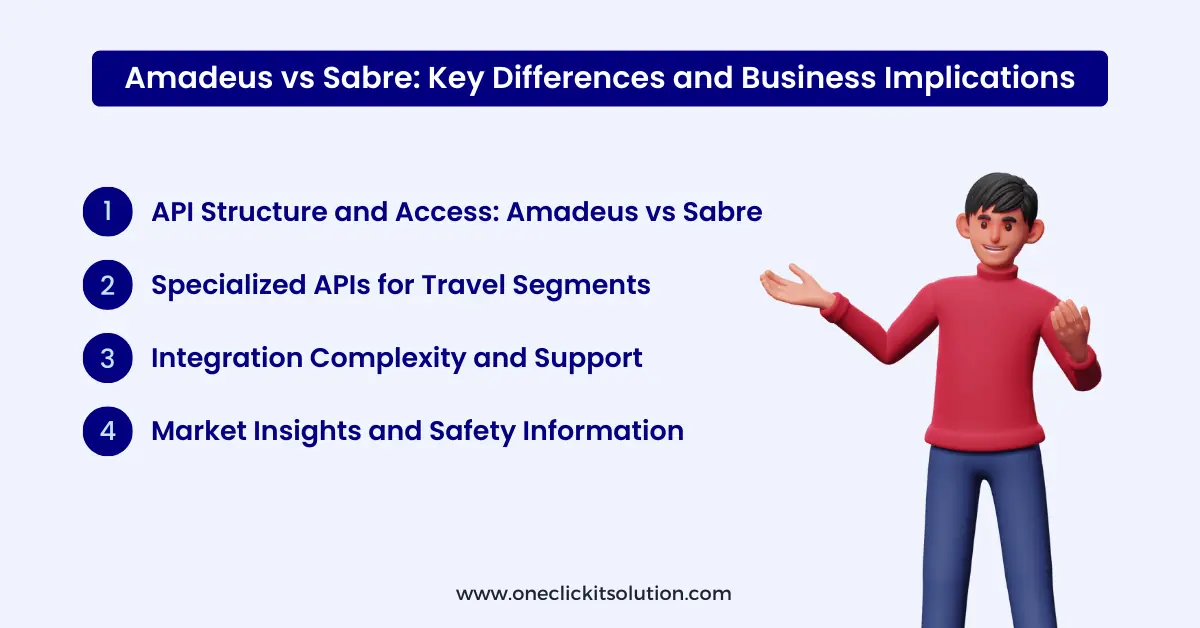
1. API Structure and Access: Amadeus vs Sabre
- Amadeus GDS offers distinct pathways for newcomers and large entities, potentially making it more accessible for startups and SMEs. New businesses can rapidly integrate with Amadeus GDS APIs, accelerating their time-to-market.
- Sabre api provides a unified suite with orchestrated APIs, appealing to businesses prioritizing workflow optimization. This can significantly reduce the complexity of multi-step travel booking processes, enhancing operational efficiency.
2. Specialized APIs for Travel Segments: Amadeus vs Sabre
- Amadeus GDS provides detailed APIs for destination experiences and itinerary management, beneficial for businesses focusing on personalized travel experiences. These APIs enable businesses to differentiate themselves by offering unique travel recommendations and streamlined itineraries.
- Sabre emphasizes efficiency in booking operations across all travel services, suitable for agencies desiring streamlined processes. This broad functionality allows businesses to cater to a wide range of customer needs under one platform.
3. Integration Complexity and Support: Amadeus vs Sabre
- Amadeus Enterprise subscription includes 24/7 support and a dedicated manager, catering to businesses that may require additional guidance. This personalized support ensures businesses can effectively overcome technical challenges during integration.
- Sabre’s combination of SOAP and REST APIs offers flexibility but may necessitate a knowledgeable tech team for integration. Businesses can leverage this flexibility to tailor their integration strategy to their specific operational needs.
4. Market Insights and Safety Information: Amadeus vs Sabre
- Amadeus GDS offers APIs for market insights and safety information, providing valuable data for strategic planning. Utilizing these insights, businesses can adapt their strategies to current market trends and enhance traveler safety, gaining a competitive edge.
- Sabre focuses on facilitating efficient booking operations without a direct emphasis on market insights. This efficiency is crucial for businesses aiming to streamline their booking processes and improve customer satisfaction.
As we can see, Amadeus and Sabre present comprehensive but distinct API functionalities catering to different business needs within the travel industry. Whether it’s expanding service offerings, enhancing customer experiences, or streamlining operations, both airline GDS systems provide their specific benefits that can help travel businesses achieve their strategic objectives. The choice between Amadeus and Sabre should align with your business’s goals, customer base, and technological infrastructure.
Amadeus vs. Sabre : GDS Software Tools Comparison
Airline GDS systems have evolved beyond their role as content aggregators and have become major technology providers in the travel industry. Amadeus and Sabre offer extensive pre-built software solutions for various entities, including retail travel agencies, travel management companies (TMCs), tour operators, airlines, hotels, and other stakeholders.
1. Platform Accessibility and Connectivity: Amadeus vs Sabre
- Amadeus Selling Platform Connect: A cloud-based solution allowing travel agents to work from anywhere with internet access, ensuring consistency through automated updates.
- Sabre Red 360: Connects agents with a broad range of suppliers and content, integrating carbon offset data for eco-conscious booking.
Business Implication: For agencies prioritizing mobility and the latest technology, Amadeus’s cloud-based solution might be more appealing. However, Sabre’s Red 360, with its eco-conscious data integration, could attract environmentally focused agencies.
2. Corporate Travel and Expense Management: Amadeus vs Sabre
- Amadeus Cytric Travel and Expense: Offers a comprehensive suite including a mobile app, expense management, and CO2 compensation reports.
- Sabre GetThere: A cloud-based booking and reporting tool used by global corporations, accessible across various devices.
Business Implication: Corporations with a strong focus on comprehensive travel and expense management might find Amadeus’s solution more aligned with their needs. Sabre’s GetThere, with its extensive booking functionality, may appeal to businesses seeking robust reporting and booking features.
3. B2B Payment Platforms: Amadeus vs Sabre
- Amadeus Outpayce: A B2B payments platform offering virtual cards for supplier payments and efficient management of B2B wallets, connected to over 50 card issuers.
- Sabre Conferma Pay: Acquired in 2022, it connects travel businesses with over 50 banks, offering virtual credit cards in 100 currencies.
Business Implication: Businesses looking for integrated financial solutions within the GDS software will find both platforms advantageous. Amadeus’s Outpayce may appeal to those prioritizing a seamless integration with the Amadeus system, while Sabre’s Conferma Pay could be preferred for its extensive banking network and currency options.
GDS Pricing and Time-to-Market Considerations
For businesses venturing into integrated technology, concerns over pricing become paramount. Amadeus and Sabre maintain a personalized approach, urging interested parties to engage directly for comprehensive details.
Determinants of Pricing in GDS Platforms
- Market Expansion: The scope and geographical reach of the target market play a significant role in shaping the pricing model. A broader market presence might necessitate a more robust infrastructure, thereby influencing the cost.
- Technological Choices: The selection of specific technologies for integration, such as API types and data exchange formats, can substantially impact the overall investment required.
- Selling Volumes: The operational scale, particularly measured by the volume of API calls or transactions processed, is directly proportional to pricing. Higher transaction volumes typically translate into increased cost due to resource consumption.
- Content Preferences: The quality and breadth of content, including the range of airlines, hotels, and ancillary services, also factor into the pricing structure. A richer content array might command a premium price.
Time-to-Market Considerations
The time-to-market for integrating with a GDS like Amadeus or Sabre is not fixed but varies based on several factors:
- Financial Commitment: The expediency of funds allocation, including the prompt settlement of quoted fees, can accelerate the integration process.
- Product Strategy Effectiveness: The clarity and coherence of the product strategy, including market positioning and service offerings, significantly influence the deployment timeline.
- Technological Compatibility: The degree to which the proposed technology seamlessly integrates with existing systems is pivotal. Compatibility issues can delay implementation and necessitate additional developmental work.
Direct engagement with GDS software providers is imperative to obtain precise pricing and timeline estimates. Successful GDS software integration hinges on a combination of financial readiness, strategic clarity, and alignment between chosen technologies and existing system architectures.
Amadeus vs Sabre: Last-minute Factors to Weigh
If you’re navigating the complex landscape of the travel industry, choosing the right Global Distribution System (GDS) can significantly impact your business’s success. Based on the comprehensive data on Amadeus vs Sabre, let’s explore which system aligns best with your business model.
Choosing Amadeus GDS
If your business is a startup or in the growth phase, particularly focused on innovation and offering personalized travel experiences, Amadeus GDS software might be the ideal choice. Amadeus’ Self-Service APIs, designed with modern REST architecture, support JSON format for data exchange, making it accessible for businesses with limited technical resources. You should consider Amadeus GDS software if your business:
1. Prioritizes Broad Market Insights and Personalization
If you’re keen on leveraging detailed market insights and prioritizing personalized travel GDS experiences, Amadeus’s extensive APIs for destination experiences, itinerary management, and market insights will serve your needs well. The ability to predict trip purposes and customize itineraries can elevate your service offerings.
2. Focuses on a Diverse Range of Travel Services
Amadeus GDS offers a robust selection of APIs across flights, hotels, cars, and destination experiences. If your business model involves providing comprehensive travel packages or you’re looking to expand your service offerings, Amadeus’s extensive network and its capability to integrate various travel services seamlessly might be the perfect fit.
3. Seeks Flexible API Integration Options
Startups and emerging travel businesses that require a flexible, scalable solution will find Amadeus’s Self-Service and Enterprise subscriptions beneficial. The modern REST architecture supporting JSON format for data exchange allows for easier integration, making Amadeus GDS software an ideal choice for businesses at different growth stages.
Opting for Sabre
Sabre, on the other hand, is well-suited for businesses that prioritize a comprehensive suite of services and operational efficiency. With its blend of SOAP and REST APIs, Sabre appeals to companies with a robust technical team capable of leveraging these technologies for optimized workflows. Your business might align more with Sabre if it:
Requires Efficient Workflow Optimization
If optimizing complex travel booking operations is a priority, Sabre’s orchestrated APIs, which streamline multi-step processes into a single call, could significantly enhance your operational efficiency. This is particularly beneficial for businesses looking to simplify their booking processes and improve customer service.
Values a Blend of SOAP and REST APIs
Businesses with a proficient technical team that values the rich functionality of SOAP APIs alongside the developer-friendly nature of REST APIs will appreciate Sabre’s approach. This blend offers the flexibility to tailor integration strategies to specific operational needs, catering to a wide range of technical capabilities within your team.
Targets the Americas or Seeks a Global Reach with a Strong American Presence
While Sabre has a dominant presence in the Americas, it also offers substantial global coverage. If your business primarily targets the American market or aims to maintain a strong presence there while expanding globally, Sabre’s extensive network and its tailored solutions for the region could provide a strategic advantage.
Alright then, in wrapping up, if your travel enterprise is geared towards leveraging market insights for personalized GDS experience and requires a wide range of integrated travel services, Amadeus GDS stands out as a compelling choice. On the other hand, if your focus is on optimizing booking operations with a flexible API approach and targeting the Americas with an intent for global expansion, Sabre could better align with your strategic goals. The decision between Amadeus and Sabre should ultimately support your business’s unique requirements, growth aspirations, and the technical proficiency of your team.
Accessing GDS Travel Systems: A Guide to Integration
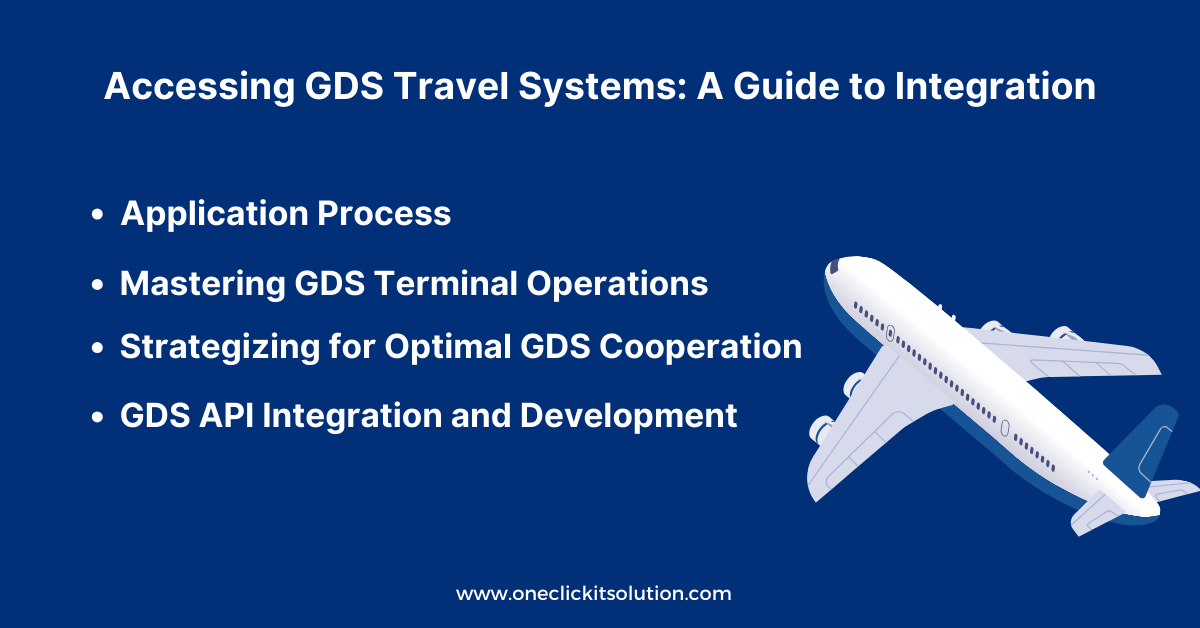
Engaging with airline GDS systems can offer a strategic advantage, particularly in the realm of air travel, due to the direct access it provides to extensive flight inventories and competitive pricing. Here are the methodical steps involved in establishing a connection with a GDS:
1. Application Process
1. 1. Initiate Contact: Reach out to your preferred GDS provider and submit an application. This process involves furnishing comprehensive details about your travel business.
1.2. Business Documentation: Provide verifiable evidence of your business’s performance and any relevant industry certifications. For agencies specializing in air ticketing, obtaining IATA accreditation (or IATAN/ARC numbers in the US) is generally mandatory.
1.3. Explore Accreditation Guides: Familiarize yourself with detailed guides on obtaining IATA accreditation, understanding ARC accreditation options, and insights into the Airline Reporting Corporation and IATA Billing and Settlement Plan.
Alternative Paths for Small Businesses
- Host Agency Partnership: Small enterprises and independent agents with budget constraints can collaborate with host travel agencies or air consolidators. This arrangement involves leveraging the host’s credentials for booking travel.
- Understand Host Agency Dynamics: Gain a comprehensive understanding of the operational model, benefits, and considerations of working with host travel agencies.
- Consolidator Collaboration: For entities not holding IATA accreditation, partnering with airline consolidators can provide access to competitive airfares and ticketing capabilities.
- Non-IATA Agency Solutions: Delve into the mechanisms, advantages, and guidelines for booking and ticketing as a non-IATA travel agency.
Connecting with airline GDS systems paves the way for enhanced service offerings and broader market reach. While direct access to a GDS can significantly benefit travel agencies, it’s crucial to navigate the accreditation landscape or consider alternative pathways like host agency affiliations or consolidator partnerships, especially for smaller players in the industry.
2. Mastering GDS Terminal Operations
In contrast to contemporary booking platforms, a native Global Distribution System (GDS) workspace, often referred to as a “green screen” or terminal, employs a command-line interface characterized by text-based inputs and outputs. Navigating through systems like Amadeus, Sabre, or Travelport demands a sophisticated technical skill set, necessitating proficiency in the operation and comprehension of a multitude of domain-specific commands and codes
2.1. Training and Proficiency Development:
- Technical Command Proficiency: Operating airline GDS systems such as Amadeus, Sabre, or Travelport involves mastering a plethora of domain-specific commands and codes, a skill that requires intensive training and consistent practice.
- Mentor-Guided Learning: Aspiring GDS experts typically undergo rigorous training, often involving daily booking exercises under the guidance of a mentor, spanning from six months to a year.
2.2. Customized Learning Paths:
- GDS-Specific Training: While airline GDS systems share commonalities, each possesses unique features and command structures. Focusing on the GDS most relevant to your operations is crucial.
- Educational Resources: Numerous courses are offered directly by airline GDS systems providers, IATA, and educational platforms like Udemy, varying in price based on duration, complexity level, and specific knowledge areas covered.
2.3. Transition to Modern Interfaces:
- User-Friendly Solutions: Modern interfaces, such as Sabre Red 360, Amadeus Selling Platform Connect, and Travelport+, offer travel agents more intuitive, productivity-enhancing tools, reducing the training duration.
- Hybrid Operation Necessity: Despite the availability of user-friendly graphical interfaces, the ability to revert to manual commands for reservation completion remains essential. GDS users are often required to complete GDS-endorsed training programs to access these advanced platforms.
2.4. Quality Assurance and Accountability:
- Error Implications: Inaccuracies during the booking process can lead to debit memos, resulting in financial penalties for travel agencies. Therefore, precision and adherence to GDS protocols are paramount.
Proficiency in GDS operations involves a blend of technical command knowledge, specialized training, and adaptability to both traditional and modern interfaces. The commitment to ongoing learning and precision is vital to leverage the full capabilities of GDS platforms and mitigate the risk of costly errors in the booking process.
3. Strategizing for Optimal GDS Cooperation
3.1. Supplier Data Relevance: The effectiveness of your engagement with right airline GDS systems is largely contingent on the quality and relevance of data supplied by various travel service providers. The more pertinent and comprehensive the data, the more beneficial it is for your travel business.
3.2 Negotiating Supplier Deals: To maximize the benefits derived from airline GDS systems, it is crucial for travel agencies to proactively negotiate deals with suppliers. This involves crafting agreements that are both profitable and advantageous, ensuring that the rates and terms are competitive and align with your business objectives.
3.3. GDS Rate Incorporation: Post-negotiation, airline GDS systems facilitate the inclusion of these negotiated rates, allowing your travel agency to offer these tailored deals to customers. This step is essential for maintaining competitive pricing and attractive offers in the travel marketplace.
4. GDS API Integration and Development
4.1. Automating Travel Content Acquisition: Rather than relying on manual search and booking processes through GDS interfaces, online travel agencies can streamline operations by integrating with GDS APIs. This approach enables the automatic sourcing and booking of travel content, enhancing efficiency and scalability.
4.2. Technical Integration Process: The integration of GDS APIs demands a proficient technical team well-versed in API development and implementation. This process encompasses multiple phases, including drafting additional contracts, conducting negotiations, developing the API connections, and thorough testing.
4.3. Certification and Timeline: The API integration process also requires certification with the respective GDS provider. The duration for development, testing, and certification can range from several weeks to a few months, depending on the complexity of the integration and the specific requirements of the GDS.

Exploring Alternatives to Global Distribution Systems (GDSs)
While airline GDS systems primarily cater to travel agencies, Online Travel Agencies (OTAs), and Travel Management Companies (TMCs) that require comprehensive travel management solutions, including air flight distribution, there are alternative avenues for those with different business focuses, particularly in hotel distribution.
Large Online Travel Agencies (OTAs)
- Expedia Group: With a vast network encompassing over 1 million properties, Expedia Partner Solutions offers access through its REST-based Rapid API. This API facilitates a complete accommodation booking flow, providing access to a wide range of accommodations, extensive property imagery, and a wealth of traveler ratings and reviews. This user-generated content is refreshed daily and made available through the API.
- Booking.com: Hosting over 2 million properties, Booking.com‘s affiliate program supports a diverse array of services. The platform features an array of integration tools like widgets, search boxes, and banners, and its Demand API supports both XML and JSON formats. This API covers live rates, hotel content, and booking processing capabilities, offering flexibility in choosing accommodation options for display and tracking revenue.
Wholesalers or Bed Banks
- Inventory Source: For many OTAs, wholesalers such as Hotelbeds serve as the primary inventory source. These entities provide extensive customer service, advanced APIs, and large inventories.
- Distribution Model: Wholesalers enter into contracts with hotels to sell rooms at a fixed rate. These rooms are then offered to OTAs and TMCs. The model revolves around maintaining high occupancy rates and negotiating favorable room rates.
Direct Connection to Providers
- API Integration: Direct connectivity with transport and hospitality providers is achieved through two-way API communication, allowing for efficient data exchange.
- Benefits: Direct connections eliminate intermediaries, ensuring access to the most relevant and current content. This approach can lead to more competitive pricing due to reduced third-party involvement.
Exploring these alternatives allows businesses to tailor their inventory management strategies to their specific needs, whether it be focused on accommodations, flights, or a combination of both.
Amadeus vs Sabre: Determining the Best Airline GDS System
Airline GDS systems are pivotal in enabling expansive distribution across the travel industry’s network. These systems offer a vast array of benefits, including wide-ranging connectivity and real-time access to travel data. Nonetheless, the utilization of airline GDS systems is not devoid of challenges. Technical complexities, resource-intensive integration processes, and the latency in incorporating NDC (New Distribution Capability) content and low-cost carrier options underscore areas ripe for improvement within GDS ecosystems.
The determination of a superior GDS between Amadeus vs Sabre, is not a matter of simple comparison but a nuanced assessment that hinges on several factors. Each GDS possesses distinct capabilities and serves different segments of the travel industry with unique efficiencies. The choice between Amadeus vs Sabre should be predicated on an in-depth analysis of your travel company’s specific needs, technical infrastructure, and strategic goals.
For travel businesses grappling with technical limitations or those seeking to tailor GDS functionalities to their specific operational requirements, collaboration with a specialized travel technology consultancy becomes imperative. One Click IT Consultancy, for instance, can offer expert guidance in guiding you through the intricacies of airline GDS systems. This partnership can enable the exploration of bespoke solutions that align more closely with your business objectives, potentially enhancing operational efficiency and optimizing cost-effectiveness.


